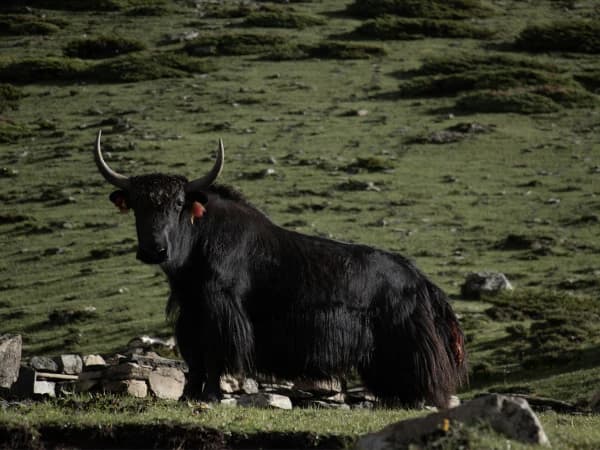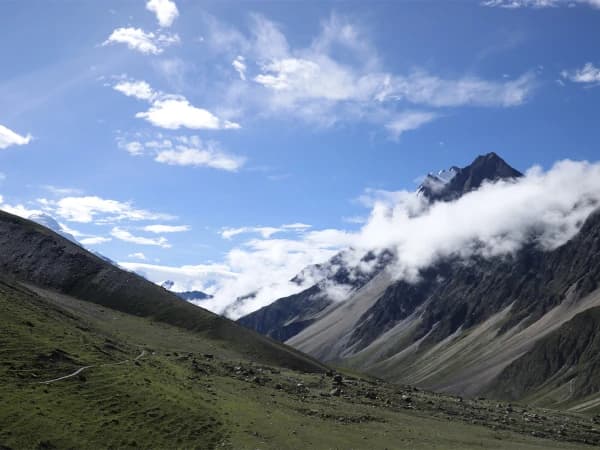The Nar Phu Valley Trek is a thrilling trekking journey that offers the unique opportunity to explore remote villages, rich Tibetan culture, and stunning natural landscapes. The Nar Phu trekking itinerary includes trekking within the Annapurna conservation area and gives you a private trekking experience.
Highlights of the Trek
- Exploration of the seven UNESCO World Heritage sites in Kathmandu Valley.
- Visit ancient monasteries and chortens.
- Breathtaking views of the annapurna range and other nearby peaks such as Annapurna, Manaslu, and Dhaulagiri during the journey.
- Chance to encounter the unique wildlife, including rare bird species and elusive mountain animals like blue sheep and snow leopards.
- Panoramic views of the surrounding Himalayan peaks from Kang La Pass.
- Private trekking experience within the Annapurna conservation area.
- Authentic glimpse into a lifestyle that has remained largely unchanged for centuries.
- Cultural immersion in ancient villages like Nar and Phu Villages.
- Crossing through the Kang La pass (5,240 meters).
A Brief Overview of the Trek
The Nar Phu Valley Trek gives you an opportunity to explore the Tibetan-influenced villages such as Nar and Phu. There you can witness the local customs, ancient monasteries, and traditional agricultural practices. You will get to experience the local hospitality too.
The journey starts with the sightseeing of unesco world heritage sites inside Kathmandu Valley. Thereafter, it continues with a scenic drive to Koto and then trekking to Manang village, passing through places like Meta, Phu village, Nar Phedi, Nar Gaun, Ngawal Valley, and Kang La Pass.
The Nar Phu Valley trekking itinerary includes crossing the Kang La Pass (5,320 meters). This pass is one of the viewpoints from where you can enjoy the breathtaking views of the peaks like annapurna i, Gangapurna, Manaslu, and Dhaulagiri. Some of the other local viewpoints are in Manang Valley, Ngawal Valley, and Phu village.
The trekking route goes through the region that is rich in biodiversity. The journey also gives various opportunities to observe the diverse wildlife and plant species. You may encounter the wildlife, including Himalayan blue sheep, snow leopards, Himalayan tahr, musk deer, Himalayan monal, bearded vultures, and more.
Major Highlights of the trek
-
UNESCO World Heritage Sites in Kathmandu Valley
Exploration of the seven UNESCO World Heritage Sites in Kathmandu Valley is one of the Nar Phu Trek itinerary activities. Those sites are Kathmandu Durbar Square (Hanuman Dhoka), Patan Durbar Square, Bhaktapur Durbar Square, Swayambhunath Stupa (Monkey Temple), Boudhanath Stupa, Pashupatinath Temple, and Changu Narayan Temple. These sites represent a blend of Hindu and Buddhist traditions. A large number of visitors come every year to visit the sites because of their intricate artistry and historical significance.
-
Cultural immersion in the ancient villages like Koto and Meta
Koto and Meta are the two ancient villages in the Par Phu Valley of Nepal. The villages are known for their rich cultural heritage and natural beauty. Both villages are surrounded by breathtaking landscapes. In Koto village, you can see the traditional stone houses adorned with prayer flags. Both villages offer the opportunity to participate in local rituals, taste traditional cuisine, and learn about the community's history. If you are trekking during the festival time, like dashain and tihar, then you will get to participate in the celebrations.
-
Nar and Phu Village
Nar and Phu villages are two important villages on the Nar Phu Valley trekking trail. The Nar village is situated at an altitude of 4,183 meters (13,724 feet), while the Phu village is located at an altitude of around 4,150 meters (13,615 feet). The villages and valley around the Nar and Phu were restricted and were closed for the foreign trekkers until 2002. Besides it, the villages are home to the popular Nar Gompa and Phu Gompa. The popular Mani Rimdu festival is also celebrated here.
-
Nar Phedi Monastery
Nar Phedi Monastery is a small Buddhist monastery located in the Annapurna conservation area of nepal. The monasteries are at an elevation of approximately 3,490 meters (11,450 feet). It provides visitors a unique opportunity to experience the monastic lifestyle alongside resident monks and nuns. The monastery offers a communal living experience where guests can join in daily activities, including cooking and participating in evening puja sessions. Besides it, you can find colorful murals, prayer wheels, and Buddhist scriptures.
-
Kang La Pass
Kang La Pass is one of the important mountain passes in the Manang District of Nepal. It is located at an elevation of approximately 5,306 meters (17,408 feet). The pass is known for its steep climbs and potential risks associated with high altitude. From this mountain pass, you can see the prominent peaks like Annapurna III, Gangapurna, Tilicho Peak, Manaslu, Himlung Himal, Dhaulagiri, and so on. Further, you can also enjoy the scenes of diverse landscapes, from lush valleys and dense forests to high-altitude deserts.
-
Ngawal Valley/ Village
Ngawal Valley is a charming place situated at an elevation of approximately 3,660 meters (12,008 feet) in the Manang District of Nepal. The area is known for its rich cultural heritage and stunning natural landscapes. In the village, you can find the Buddhist monastery and Ne Guru cave. Besides it, you can also enjoy the views of the peaks like Annapurna IV, Annapurna III, and Tilicho Peak from here.
-
Manang Village
The Manang village is one of the beautiful villages in the Manang district of Nepal. The elevation level at which the Manang village sits is approximately 3,540 meters (11,614 feet). From this village, you can see the prominent peaks like Annapurna II, III, Gangapurna, and Tilicho Peak. The people who live in the Manang village are Gurung and Ghale people. They practice traditional customs and celebrate various festivals.
Why us for the Nar Phu Valley Trek 2026?
3S: Safety, Success, and Satisfaction
Booking a Nar Phu Valley Trek package 2026 with Mystic Adventure Holidays offers superior service and benefits. Here's why:
- Client Safety: Our trips are organized with the utmost safety in mind.
- Best Price Guarantee: Ensuring you get the best value.
- Free Transfers: Complimentary airport-to-hotel and return transfers in a private vehicle.
- Expert Guides: Trained, government-licensed local guides with extensive route knowledge.
- Support for Locals: Helping local communities earn a living through tourism.
- Health Monitoring: Oximeters to monitor oxygen levels during high-altitude treks.
- Medical Preparedness: Guides equipped with medical kits to handle any situations that may arise.
- Essential Gear: Arrangements for sleeping bags and down jackets.
- Free Storage: Secure storage at our office for extra luggage during your tour.
- Convenience: Duffel bags for transferring items to be carried during the journey.
- Porter Service: A free porter to help carry your heavy bags.

















